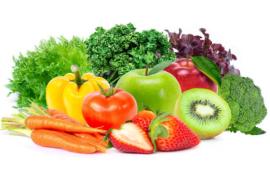Bubbly and energetic three-year-old Elijah Silvera attended a New York City daycare center. He had a severe milk allergy, which his daycare employees were aware of and had documentation for. Despite the administration’s knowledge, Elijah was fed a grilled cheese sandwich during lunch on November 3, 2017. Elijah began to display obvious symptoms from consuming his recognized allergen. The staff did not contact 911 emergency services, nor did they provide emergency medical care or use an EpiPen. (Bekiempis, 2018).
Elijah died soon after from anaphylaxis.
Triumph from Tragedy
Determined to help prevent other children dying from food allergy mishandling, Elijah’s parents, Dina and Thomas Silvera, formed the Elijah-Alavi Foundation (EAF) and collaborated with professionals and other organizations to draft Elijah’s Law (Elijah-Alavi Foundation, 2022).
Also known as the Childhood Anaphylactic Policy Act (HB0102), Elijah’s Law was signed into New York law on September 12, 2019, amending the Public Health Law already in place in schools to also protect early childhood care programs. This law requires all New York programs to prevent and respond to food allergy anaphylaxis. Since passing in New York, Elijah’s Law has also passed in Illinois, and the bill has been introduced to legislatures in Pennsylvania, Virginia, and California, with calls for other states to enact it as well (Elijah-Alavi Foundation, 2022). Thomas Silvera has said, “I ask that policy lawmakers wake up and start making changes fast to protect our children” (Smith, 2018).
The law requires a communication plan, an emergency-response plan, and for childcare providers to have Auvi-Q epinephrine autoinjectors in stock. Dosing for the Auvi-Q injector is for small children weighing between 16.5 and 33 pounds (Quinones, 2021).
A Nationwide Goal
In 2022, the EAF partnered with the Asthma and Allergy Foundation of America (AAFA) to produce a two-part report, Child Care Policies for Food Allergy: Elijah’s Law Report for US States and Territories. It includes all states’ food allergy early childcare protection policies information and an advocacy toolkit to stimulate support for Elijah’s Law in more states. The AAFA desires the legalization of Elijah’s Law in every US state.
The report outlines nine basic standards that protect children with food allergy (see sidebar). Camps most likely affected by these standards are day camps, camps serving children five and under, and family camp programs. Even if your camp does not cater to young children, be aware that these laws will probably eventually affect the protection requirements for everyone. Some of these standards, such as food allergy, emergency response, and anaphylaxis/EpiPen training would be a wise pursuit for the benefit of all ages.
Nine Impending State Requirementss for Childcare Program Food Allergy Protection:
- Up-to-date health records to include known allergies
- A food allergy care plan for children with food allergies
- Training for all childcare personnel in the prevention, recognition, and treatment of allergic reactions to food
- Training for all childcare personnel on the administration of epinephrine autoinjectors
- Permission to stock undesignated epinephrine autoinjectors at childcare facilities
- Immediate contact with emergency services whenever epinephrine has been administered
- Parent/guardian mandatory notification of possible allergic reaction
- Food service policies that address food allergies
- Prominent posting of a child’s food allergies in the childcare facility and/or in the food preparation area (AAFA, 2022)
Which standards have your state met? Which standards have your camp met? These protections are already in place for school-aged children in some states. Be aware that these could be coming to camps in the future. You can find a state-by-state review here.
Milk Allergy Populations: Ages and Statistics
Food allergy affects 1 in 13 children in the US (AAFA, 2022). Cow’s milk allergy (CMA) is the most common food allergy in children under the age of five, according to the American College of Allergy, Asthma, and Immunology (ACAAI). Results from a 2015–2016 research study presented at the ACAAI Annual Scientific Meeting confirmed that more than two percent of all US children under five years of age have a milk allergy (ACAAI, 2018; Zimlich, 2022).
Because the average child in the US traditionally drinks milk from a young age, it’s imperative to soon find out whether they may be allergic to milk. Approximately 53 percent of infants under one year of age with food allergy have a milk allergy, while that number drops to 41 percent for 1- to 2-year-olds, 34 percent for 3- to 5-year-olds, and 15 percent for 11- to 17-year-olds, according to Christopher Warren, PhD, lead author of the study (ACAAI, 2018).
Epidemiology of Cow’s Milk Allergy (NCBI-NIH)
Approximately 60 percent of those with cow’s milk allergy have the IgE-mediated form, “a type I hypersensitivity reaction in which symptoms usually occur within minutes to one to two hours of ingestion” (Flom & Sicherer, 2019).
Positives to overall numbers of milk allergy are that 80–90 percent of childhood milk allergies resolve around the age of five (Caffarelli et al., 2010), and a large proportion of patients are able to tolerate baked cow’s milk. However, because this is a variable within patients, it is imperative to know if campers with CMA are able to tolerate milk within baked products.
Milk Allergy or Lactose Intolerance — What's the Difference?
Milk allergy and lactose intolerance are often confused. Astonishingly, up to 75 percent of the world’s population is lactose intolerant (Silanikove, Leitner, & Merin, 2015). According to Food Allergy Research and Education (FARE), lactose intolerance is different from milk allergy in that it does not produce an immune system reaction. Lactose-intolerant individuals are lacking the enzyme lactase, a sugar that aids in the digestion of lactose. Symptoms of lactose intolerance are nausea, cramps, gas, bloating, and diarrhea. While lactose intolerance can be painful, it is not life-threatening (FARE, 2022a).
Milk allergy is when the body’s immune system reacts to a milk-containing product, prompting an allergic reaction. Allergic reactions may include milder symptoms such as rashes, itching, swelling and hives, or severe backlash including difficulty swallowing, difficulty breathing, wheezing, or loss of consciousness (FARE, 2022b). Milk allergy can be fatal.
Thomas Silvera emphasized, “A child who suffers from severe food allergies and anaphylaxis needs to have the same protection with their health as anyone else and not be looked at as if this is ‘no big deal.’ It’s a very big deal”(Smith, 2018).
To assist you in protecting the health of milk-allergic campers, the following resources are included to access in your kitchen.
Alternatives for the Milk Allergic
The following options can be healthful replacements for cow’s milk, and some are calcium and vitamin D fortified:
- Almond milk
- Soy milk
- Coconut milk
- Rice milk
- Oat milk
- Hemp milk
- Flax milk
- Macadamia milk
- Quinoa milk
- Cashew milk
- Tiger nut milk
- Coconut oil — easy 1:1 replacement for butter in most recipes
- Olive oil — best for sautéing foods or caramelizing them rather than in baking
- Avocados — a ripe avocado may be a butter replacement for baking; the flavor disappears and leaves a creamy, fatty texture
- Bananas — a ripe banana can also replace butter in sweet baked goods but may change the flavor
(Medical News Today, 2018)
Milk Allergy Avoidance List
- Artificial butter flavor
- Butter, butter fat, butter oil, butter acid, butter ester(s)
- Buttermilk
- Casein, casein hydrolysates
- Caseinates (ammonium, calcium, magnesium, potassium, sodium)
- Cheese, cottage cheese
- Cream, crema, crème
- Cream cheese
- Curds
- Custard, pudding
- Diacetyl
- Eggnog
- Ghee
- Half and Half
- Ice cream
- Ice milk
- Hydrolysates (casein, milk protein, protein, whey, whey protein)
- Lactic acid starter culture
- Lactalbumin, lactalbumin phosphate
- Lactoglobulin, lactoferrin
- Lactose, lactulose
- Milk (in all forms: derivative, dry, protein, solids, malted, condensed, evaporated, protein, skim, solids, whole, low-fat, 1 percent, 2 percent, fat-free/nonfat, goat’s milk, and milk from other animals)
- Milkshakes, malts
- Nisin
- Nougat
- Protein powders
- Recaldent
- Rennet casein
- Sour cream or sour cream solids
- Sour milk solids
- Tagatose
- Whey (delactosed, demineralized, protein concentrate, protein hydrosolate)
- Yogurt
(FARE, 2022b; Johns Hopkins Medicine, 2023; Stanford Medicine Children’s Health, 2022; WebMD, 2021)
Other Possible Sources of Milk
- Artificial butter flavor
- Bacterial cultures
- Baked goods and desserts
- Breakfast foods (e.g., cereals, pancakes, waffles)
- Brown sugar flavoring
- Caramel candies, caramel flavoring
- Chocolate
- Flavorings, natural and artificial
- High-protein flour
- Luncheon meat, hot dogs, and sausages, which may use the milk protein casein as a binder (Also, deli meat slicers are often used for both meat and cheese products, leading to cross-contact.)
- Margarine
- Nisin
- Nondairy products, as many contain casein
- Pantry staples (e.g., breads, pasta, tortillas)
- Shellfish is sometimes dipped in milk to reduce the fishy odor (Ask questions when buying shellfish.)
- Sherbet
- Snack foods (e.g., chips, crackers, pretzels)
- Tuna fish, as some brands contain casein
- Some specialty beverages (e.g., smoothies, lattes) made with milk substitutes (i.e., soy-, nut- or rice-based products) are manufactured on equipment shared with milk
- Many restaurants put butter on grilled steaks to add extra flavor (You can’t see the butter after it melts.)
- Some medications (e.g., psyllium, Advair diskus, Flovent diskus, some probiotics) contain milk protein
(FARE, 2022b; Johns Hopkins Medicine, 2023; WebMD, 2021)
Other Important Considerations
Products labeled “nondairy” do not contain milk, cream, or butter, but other milk ingredients could be present.
A “K” or “U” on a food package means a food is kosher. These items are often labeled “pareve” or “parve,” which means the product also contains no milk/milk products. A “D” on the product next to the “K” or “U” means it contains dairy and is not safe to consume (FARE, 2022b; Stanford Medicine Children’s Health, 2022).
Read labels diligently.
Resources
- American College of Allergy, Asthma, and Immunology. (2018, November 16). Milk allergy affects half of US food-allergic kids under age 1: Most children with a milk allergy don’t carry epinephrine. ScienceDaily. sciencedaily.com/releases/2018/11/181116083208.htm
- Asthmas and Allergy Foundation of America. (2022). Food allergies in childcare. AAFA. aafa.org/advocacy/key-issues/food-allergies-advocacy/food-allergies-in-child-care-settings/
- Bekiempis, V. (2018, July 6). Parents of boy who died after eating grilled cheese sandwich sue for $10M. New York Daily News. nydailynews.com/new-york/ny-metro-grilled-cheese-lawsuit-20180706-story.html
- Caffarelli, C., et al. (2010, January 15). Cow’s milk protein allergy in children: A practical guide. Italian Journal of Pediatrics. ncbi.nlm.nih.gov/pmc/articles/PMC2823764/
- Coyle, D. (2018, January 17). The 9 best nondairy substitutes for milk. Healthline. healthline.com/nutrition/best-milk-substitutes
- Elijah Alavi Foundation, Inc. (2022). The Elijah Law. elijahalavifoundation.org/general-4
- Food Allergy Research and Education. (2022a). Milk allergy vs. lactose intolerance. FARE. foodallergy.org/resources/milk-allergy-vs-lactose-intolerance
- Food Allergy Research and Education. (2022b). Milk allergy. FARE. foodallergy.org/living-food-allergies/food-allergy-essentials/common-allergens/milk
- Flom, J. & Sicherer, S. (2019, May 10). Epidemiology of cow’s milk allergy. ncbi.nlm.nih.gov/pmc/articles/PMC6566637
- Johns Hopkins Medicine. (2023). Milk allergy diet: General guidelines for milk allergy. hopkinsmedicine.org/health/wellness-and-prevention/milk-allergy-diet
- Medical News Today. (2018, October 23). Dairy alternatives: How to replace milk, cheese, butter, and more. medicalnewstoday.com/articles/323411
- Smith, G. (2018, July 9). Family sues preschool and teacher in Elijah’s dairy allergy tragedy. allergicliving.com/2018/07/09/family-sues-preschool-and-teacher-in-elijahs-dairy-allergy-tragedy/
- Stanford Medicine Children’s Health. (2022). Milk allergy diet for children. stanfordchildrens.org/en/topic/default?id=milk-allergy-diet-for-children-90-P01696
- Quinones, J. (2021, October 20). New state law allows daycares to carry epi pens after 3-year-old dies of allergic reaction. Retrieved from spectrumlocalnews.com/nys/capital-region/news/2021/10/19/elijah-s-law-in-new-york-state
- Silanikove, N., Leitner, G., & Merin, U. (2015, August 31). The interrelationships between lactose intolerance and the modern dairy industry: global perspectives in evolutional and historical backgrounds. ncbi.nlm.nih.gov/pmc/articles/PMC4586535/
- WebMD. (2021, May 13). Living with a milk allergy. webmd.com/allergies/milk-allergy
- Zimlich, R. (2022, April 15). Increase in food allergies signals similar rise in cow’s milk allergy. Contemporary Pediatrics. contemporarypediatrics.com/view/increase-in-food-allergies-signals-similar-rise-in-cow-s-milk-allergy
Kimberly Whiteside Truitt is former food service manager at Camp Gilmont and Camp Zephyr and has served on Camping Magazine’s Editorial Advisory Committee. Kimberly was a presenter at the 2018 and 2020 North American Food Service and Maintenance Conferences.





